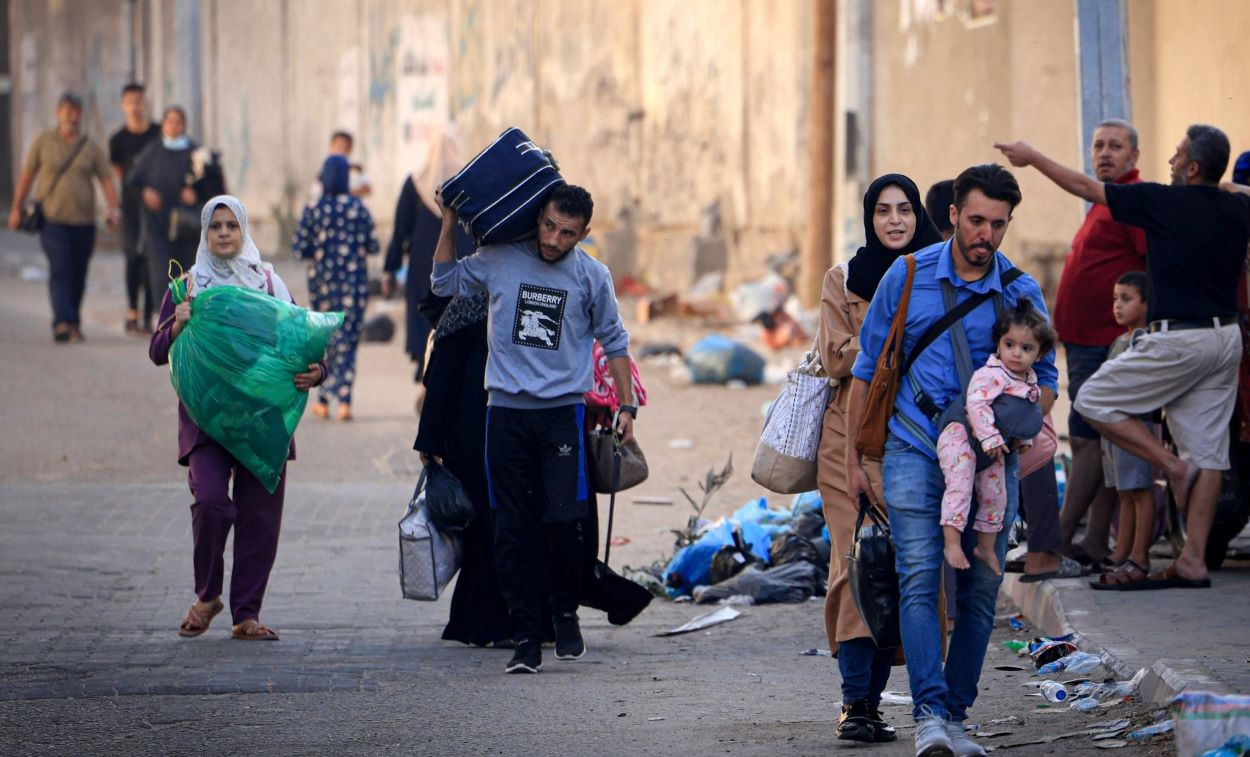Israel’s military has taken a decisive step, directing over a million civilians in Gaza City to move south within a day, signalling an impending ground invasion.
The move follows a marked intensification of the siege on the Gaza Strip, where ‘Hamas targets’ have been the focus of relentless attacks. These attacks have culminated in the tragic death of over 1,500 Palestinians. Defence Minister Yoav Gallant has not minced his words, openly declaring the current situation a “time for war.” However, the implications of this directive are profound. The United Nations has voiced concerns about the severe humanitarian consequences of such a massive relocation, especially when resources like food and water are already in short supply in the region.
This looming humanitarian crisis in Gaza is sounding alarm bells internationally. Critical infrastructure is nearing its breaking point. The International Committee of the Red Cross paints a grim picture, warning that hospitals might soon be without power as emergency generator fuel runs out. Concurrently, the United Nations World Food Programme reports critically low food and water supplies.
The international repercussions of this conflict aren’t confined to the immediate region. Both the US and Japan are mobilizing resources and arranging charter flights to evacuate their citizens from the heart of the conflict in Israel. As the ripples of this clash spread, parts of Europe are witnessing civil unrest. This has led to heightened security measures, especially around Jewish institutions, as concerns over the safety of citizens mount.
Historic Tensions and The Path Ahead
Peeling back the layers, Gaza’s tumultuous history is marked by economic hardships, continuous Israeli bombardments, and stringent blockades. The narrative becomes even more poignant considering that many Gazans are descendants of refugees displaced during Israel’s establishment in 1948.
Tensions, far from easing, have been on a consistent upward trajectory. Over recent months, Palestinian anger has surged, stoked by Israel’s crackdowns in the West Bank and discussions around further land acquisitions. This backdrop of historical and recent events presents a complex tableau. The peace process once promised to establish a Palestinian state, collapsed a decade ago. Palestinian leaders argue that this left their population devoid of hope, inadvertently giving extremists an environment to thrive in. As events unfold, the journey towards a peaceful resolution appears increasingly intricate and challenging.






